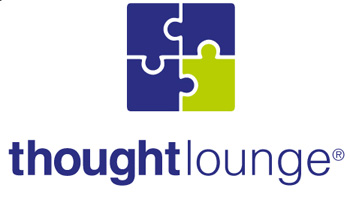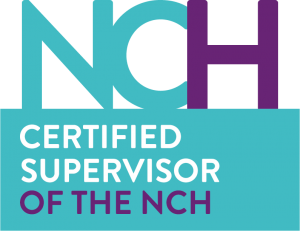Wellness in the Workplace

Effective Wellness Return
Business Drivers
Like any company, there are three primary drivers:
- Increasing profit margin
- Greater effectiveness/performance
- Increased productivity
Business operations management techniques can be applied in order to provide understanding and changes to facilitate the movement toward the above drivers. These could be change of process, flow, logistics, operational improvement etc. However, Human Resource, people, continue to dominate spend in terms of overall cost. People continue to be central to most essential practice in delivery of business activities. Yet, there remains a hidden and yet significant drain on budget which could simply and effectively be reduced.
What is the issue?
In late 2016, the CIPD[1] conducted their annual absence survey. They suggest that a mean figure of employee absence for a small and medium company (SME) currently stands at 7.5[2] days per employee per financial year. This figure has remained consistent/steady since 2010 and shows no immediate signs of improvement. Although this is somewhat healthier than the 9.4 days per employee for a large company employing over 5000 staff, the potential cost remains, nevertheless, troubling. The cost of this absence was estimated to stand at somewhere approximating £522-£835 per person. Thus, for example, if an SME employees the maximum under the definition, 250 employees, the cost to the company could well exceed £200K per financial year[3].
The reasons for absence have been found to be unswerving over recent years, and although non-genuine absence is a major cause for concern, it is stress which is the number 1 cause of absence both in the short and long term. Although volume of work is cited as the number 1 factor, relationships, both personal and professional, alongside personal illness, restructuring and work pressures are said to be the main causes of this stress. Worryingly, there is also an emerging and increasing trend in reported cases of anxiety and depression amongst employees. These conditions are beginning to have an increasing impact on the workforce alongside stress, in fact there have been an increase of 50% of reported cases in 2016.
What does Absence cost an SME?
The cost to the company of absence is not simply a financial cost. Although direct cost is the easiest to measure – In fact I propose that decreases in employee absence metrics would be proportional to increased savings and productivity. Only 8% of companies are said to make this connection and therefore measure this. You will understand that absence affects employees in other ways too, I suggest that there is a strong connection.
- Lowers morale – cover for absent colleagues provides increases to workloads. If an employee becomes aware that ‘pulling a sickie’ has happened – watch morale tumble. If the absence is stress related, this stress is felt by those remaining at work.
- Leads to mistakes – it would stand to reason that increased workloads and higher numbers of priorities lead to mistakes, this in turn leads to reduction in stakeholder trust, increasing stress and compounding the presenting issue.
- Damages productivity – projects, deadlines and deliverables suffer.
The top people management priorities suggested by CIPD are as follows:
- Recruitment
- Engagement
- Retention
Employee engagement is ‘the harnessing of an organization’s members’ selves to their work roles; in engagement people employ and express themselves physically, cognitively, and emotionally to their role performances[4]’ (khan 1990:694). Simply put, an employee who is engaged at work will do more without reward and seek to forward the organization’s goals without having to be asked, they will actively promote and deliver through belief. There is a relationship between engagement, retention and absence metrics. Indeed, it is found that those who feel their jobs positively affect their health are more likely to be engaged in the workplace, viewing their jobs as healthy[5] (Sonnentag 2003) and that having positive emotional management; management’s awareness for employees deeper emotional needs (Robinson 2006) is likely to drive[6] trust, loyalty and commitment leading to greater performance overall.
What helps?
SMEs are likely to attempt to manage individuals on an ad-hoc basis with the most common approach being to make increases in communication between employer and employee. Access can be given to counselling and assistance programmes and the focus is on health and lifestyle. Across the companies who subscribe to well-being initiatives, 46% suggest their investment on well-being programmes will be increasing for 2017. Some companies provide an approach to absence management that is symptomatic of the ‘stick approach’, e.g. disciplinary procedures, restrictions on sick pay, taking absence record into consideration during promotional rounds. However, it is pleasing to note that there are many more positive approaches such as training for management, return to work and rehabilitation and health programmes being introduced. The most effective approach appears to be return to work interviews, following attendance at external occupational health services, yet only 13% of companies provides this opportunity. Taking this further, only 43% of SMEs do not take steps to reduce[7] the triggers of stress in the workplace. As reported, there is a greater number of cases of both anxiety and depression, but worryingly, 50% of companies had no facility to support people with mental health issues, no information was available on the number of SMEs unable to support, I suspect that this would be a high number, reliant on over-subscribed NHS services. Reactive spend on support post diagnosis seems to be more likely than a proactive spend on promotion of positive mental health initiatives. Therefore, one has to question if the investment on well-being is actually proving to be an effective spend?
A number of employers offer well-being support in terms of counselling, however, this number reduces to 13% in terms of companies that are offering proactive programmes such as emotional resilience, access to relaxation, meditation and mindfulness, gym access, smoking cessation, nutrition advice etc.
Future Trends?
In the future, companies are looking likely to have to increase their spending on employee well-being programmes. For those companies that have increased spend and have provided wellness programmes, they see return on their investment in terms of:
- Reduced absences
- Reduction in staff turnover
- Reduced accidents and injuries
- Increases in employee satisfaction
- Reductions in recruitment costs
- Increases in productivity
There is evidence to suggest that return on investment can range anywhere from £2 for every £1 spent to £34 for every £1 spent[8]. This return is likely to be realized in year 2-3 from the start/active date from the introduction of wellness and well-being programmes.
The cost of a multi-component intervention is approximately £100 per employee per year and of course assumes that not every employee will take up the offers of intervention. The model used to calculate this price assesses the impact of a workplace based health promotion and well-being programme in a white collar organisation with 500 employees, all of whom are covered by the intervention. The cost savings are addressed from the perspective of the business, which is assumed to bear the cost of the intervention. Estimates of the effectiveness, uptake of the intervention (43% of all employees) and impact on absenteeism and presenteeism (lost productivity while at work) are taken from a study undertaken in the UK offices of a large multi-national company. From a business perspective the model appears to save costs compared to not implementing wellness programmes. In year 1, the initial cost was £40,000 for the programme which was outweighed by the gains arising from reduced presenteeism and absenteeism of £387,722. This represented a substantial annual return on investment of more than 9 to 1. In addition, there were benefits to the health system from reduced physical and mental health problems as a result of the intervention, but these are not quantified in the case study.
What next?
There is a compound issue with ineffective spend on wellness and a loss of profits due to absence. If you would like to see a decrease in spend due to staff absence, and to provide a proactive and effective wellbeing approach then thoughtlounge can provide a direct wellness and coaching intervention programme tailored bespoke to your company. Thoughtlounge is a total provider of therapy and coaching in Southampton and the South coast and has previously worked with a number of organizations, including the Royal Navy, Ford UK and The Breeze Radio.
Although there is a guide to costs/indicative estimated spend per head in this paper, I would recommend that you contact me to discuss the next steps, timeframe and how thoughtlounge can intervene and provide you with a ROI. If this paper has resonated with you, please do email me to arrange a more detailed document proposal.
In the longer term, thoughtlounge is also able to provide recommendations and consultancy services to increase engagement levels, and guidance in terms of EVP/policy implementation.
About me
I am an ex-military Officer with a background in operations and the delivery of capability in pressurized environments. My CV is complex and I have a vast array of skills, project management to postgraduate professional coaching and therapy to delivery of operations management and other change/people orientated programmes including CIPD and CMI management qualifications for Solent University. My passion is in realizing both potential and performance.
[1] CIPD (2016) Absence management Annual Survey Report.
[2] This figure does vary depending on industry, the highest being public sector, local government and health.
[3] £250K is reported by GLA Economics: London’s Business Case for employee health and well-being.
[4] Kahn, W.A. (1990) ‘Psychological conditions of personal engagement and disengagement at work’, Academy of Management Journal, Vol 33, pp692-724.
[5] Sonnentag, S. (2003) ‘Recovery, work engagement, and proactive behavior: a new look at the interface between non-work and work’, Journal of Applied Psychology, Vol 88, pp518-28.
[6] Robinson, D., Perryman, S. and Hayday, S. (2004) The Drivers of Employee Engagement. Brighton, Institute for Employment Studies.
[7] Usual methods are flexible working, improvements in work/life balance.
[8] Healthy Work – Evidence into Action 2010 page 46 Figure 9.
Thank you to Madstreetz at Flick.com for use of the image.





